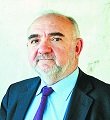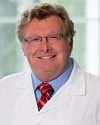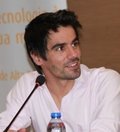Theme: Transforming Repairs into Regeneration
Regenerative Medicine 2016
The 5th International Conference on Tissue Engineering & Regenerative Medicine which is going to be held during September 12-14, 2016 at Berlin, Germany will bring together world-class personalities working on stem cells, tissue engineering and regenerative medicine to discuss materials-related strategies for disease remediation and tissue repair. Bone tissue engineering, soft tissues, tissue imaging, tissue implant, cartilage and skin defects are a special focus along with applying basic science and engineering principles from diverse areas towards solving clinically relevant biomedical problems. OMICS International Organizes 300+ conferences, 500+workshops and 200+symposiums on Clinical, Medicine, Pharma and Science & Technology every year across USA, Europe, Asia, Middle East, Australia and UK with support from 1000 more scientific societies and Publishes 500 open access journals which contains over 30000 eminent personalities, reputed scientists as editorial board members.
We welcome you to Regenerative Medicine Conference, to be held on September 12-14, 2016 in Berlin, Germany. This conference presents information regarding cutting-edge developments in all areas of tissue engineering, stem cell research, regenerative medicine research including the biology, medicine, applications and regulations of stem cells. Topics of discussion include recent developments in pre-clinical and clinical trials of stem cell therapy, regenerative medicine and tissue engineering, cancer stem cells, immunotherapy, stem cell reprogramming, and regulatory policies regarding stem cell research.
After the success of the 5th International Conference on Tissue Engineering and Regenerative Medicine Conference in 2015, it is time once again for the tissue engineering and regenerative medicine industries to come together and this time look forward to the next 10 years of commercial successes within these two sectors.
The World Conference on Regenerative Medicine has traditionally focussed on developing the commercial aspects of regenerative medicine research, with the addition of innovation within stem cells, regenerative medicine, notably tissue engineering.
Now the first regenerative medicine therapies have made it to market, it is important, for the success of the sector, to move forward and include new projects and innovations that are coming out of academia and university spin-outs. These will be both new developments in regenerative medicine research but also within the use of tissue engineering and stem cells for drug discovery.
Alongside the stem cells content, there is an increasing amount of demand for other forms of regenerative medicine and so the regenerative medicine conference will move to include more commercial opportunities within the field of tissue engineering: markedly biological scaffolds, 3D bioprinting and organ regeneration.
Through the last 5 years the Regenerative Medicine Conference has built up a reputation for delivering high-level commercial content and bringing together the senior executives and thought-leaders within the space.
Tissue engineering is an interdisciplinary field that applies the principles of engineering and life sciences toward the development of biological substitutes that restore, maintain, or improve tissue function or a whole organ. Currently it has emerged as a rapidly diversifying field with the potential to address the worldwide organ shortage issue and comprises of tissue regeneration and organ replacement. The global tissue engineering and regeneration market reached $17 billion in 2013. This market is expected to grow to nearly $20.8 billion in 2014 and $56.9 billion in 2019, a compound annual growth rate (CAGR) of 22.3%. On the basis of geography, Europe hold the second place in the global market in the field of regenerative medicine & tissue engineering. In Europe countries like UK, France and Germany are possessing good market shares in the field of regenerative medicine and tissue engineering. Spain and Italy are the emerging market trends for tissue engineering in Europe.
The 5th International Conference on Tissue Engineering & Regenerative Medicine which is going to be held during September 12-14, 2016 at Berlin, Germany will bring together world-class personalities working on stem cells, tissue engineering and regenerative medicine to discuss materials-related strategies for disease remediation and tissue repair.
In the field of biology, regeneration is the progression of renewal, regeneration and growth that makes it possible for genomes, cells, organ regeneration to natural changes or events that cause damage or disturbance. This study is carried out as craniofacial tissue engineering, in-situ tissue regeneration, adipose-derived stem cells for regenerative medicine which is also a breakthrough in cell culture technology. The study is not stopped with the regeneration of tissue where it is further carried out in relation with cell signaling, morphogenetic proteins. Most of the neurological disorders occurred accidental having a scope of recovery by replacement or repair of intervertebral discs repair, spinal fusion and many more advancements. The global market for tissue engineering and regeneration products such as scaffolds, tissue implants, biomimetic materials reached $55.9 billion in 2010 and it is expected to reach $89.7 billion by 2016 at a compounded annual growth rate (CAGR) of 8.4%. It grows to $135 billion by 2024.
Related Conferences
5th International Conference on Tissue Engineering and Regenerative Medicine September 12-14, 2016 Berlin, Germany; 5th International Conference on Cell and Gene Therapy May 19-21, 2016 San Antonio, USA; International Conference on Cancer Immunology and Immunotherapy July 28-30, 2016 Melbourne, Australia; International Conference on Molecular Biology October 13-15, 2016 Dubai, UAE; Tissue Niches and Resident Stem Cells in Adult Epithelia Gordon Research Conference, Regulation of Tissue Homeostasis by Signalling in the Stem Cell Niche August 7-12, Hong Kong, China; 10 Years of IPSCs, Cell Symposia, September 25-27, 2016 Berkeley, CA, USA; World Stem Cells and Regenerative Medicine Congress May 18-20, 2016 London, UK; Notch Signaling in Development, Regeneration and Disease Gordon Research Conference, July 31-August 5, 2016 Lewiston, ME, USA
Designs for Tissue Engineering
The developing field of tissue engineering aims to regenerate damaged tissues by combining cells from the body with bioresorbable materials, biodegradable hydrogel, biomimetic materials, nanostructures and nanomaterials, biomaterials and tissue implants which act as templates for tissue regeneration, to guide the growth of new tissue by using with the technologies. The global market for biomaterials, nanostructures and bioresorbable materials are estimated to reach $88.4 billion by 2017 from $44.0 billion in 2012 growing at a CAGR of 15%. Further the biomaterials market estimated to be worth more than 300 billion US Dollars and to be increasing 20% per year.
Related Conferences
5th International Conference on Cell and Gene Therapy May 19-21, 2016 San Antonio, USA; International Conference on Restorative Medicine October 24-26, 2016 Chicago, USA; International Conference on Molecular Biology October 13-15, 2016 Dubai, UAE; 2nd International Conference on Bio-banking August 18-19, 2016 Portland, USA; ISSCR Annual Meeting 22-25 June, 2016 San Francisco, California, USA; Keystone Cardiac Development, Regeneration and Repair (Z2) April 3 – 7, 2016 Snowbird, Utah, USA; EMBL Hematopoietic Stem Cells: From the Embryo to the Aging Organism, June 3-5, 2016 Heidelberg, Germany; ISSCR Pluripotency: From basic science to therapeutic applications March 22-24, 2016 Kyoto, Japan
This interdisciplinary engineering has attracted much attention as a new therapeutic means that may overcome the drawbacks involved in the current artificial organs and organ transplantation that have been also aiming at replacing lost or severely damaged tissues or organs. Tissue engineering and regenerative medicine is an exciting research area that aims at regenerative alternatives to harvested tissues for organ transplantation with soft tissues. Although significant progress has been made in the tissue engineering field, many challenges remain and further development in this area will require ongoing interactions and collaborations among the scientists from multiple disciplines, and in partnership with the regulatory and the funding agencies. As a result of the medical and market potential, there is significant academic and corporate interest in this technology.
Related Conferences
International Conference on Restorative Medicine October 24-26, 2016 Chicago, USA; 5th International Conference on Cell and Gene Therapy May 19-21, 2016 San Antonio, USA; 5th International Conference on Regenerative Medicine September 12-14, 2016 Berlin, Germany; 2nd International Conference on Tissue preservation August 18-19, 2016 Portland, USA; Cell and Gene Therapy January 25-27, 2016 Washington D.C., USA; ISSCR Stem Cell Models of Neural Degeneration and Disease February 1-3, 2016 Dresden, Germany; Craniofacial Morphogenesis and Tissue Regeneration March 12-18, 2016 California, USA; Keystone Stem Cells and Cancer (C1) March 6-10, Colorado, USA; Keystone Stem Cells and Regeneration in the Digestive Organs (X6) March 13 – 17 Colorado, USA
The characterization of cancer stem cell is done by identifying the cell within a tumor that possesses the capacity to self-renew and to cause the heterogeneous lineages of cancer cells that comprise the tumor. This stem cell which acts as precursor for the cancer acts as a tool against it indulging the reconstruction of cancer stem cells, implies as the therapeutic implications and challenging the gaps globally. The global stem cell market will grow from about $5.6 billion in 2013 to nearly $10.6 billion in 2018, registering a compound annual growth rate (CAGR) of 3.6% from 2013 through 2018. The Americas is the largest region of global stem cell market, with a market share of about $2.0 billion in 2013. The region is projected to increase to nearly $3.9 billion by 2018, with a CAGR of 13.9% for the period of 2013 to 2018. Europe is the second largest segment of the global stem cell market and is expected to grow at a CAGR of 13.4% reaching about $2.4 billion by 2018 from nearly $1.4 billion in 2013.
Related Conferences
5th International Conference Cell and Gene Therapy May 19-21, 2016 San Antonio, USA; International Conference on Molecular Biology October 13-15, 2016 Dubai, UAE; 5th International Conference on Tissue Engineering September 12-14, 2016 Berlin, Germany; 2nd International Conference on Tissue preservation August 18-19, 2016 Portland, USA; Molecular and Cellular Basis of Growth and Regeneration (A3) January 10 – 14, 2016 Colorado, USA; Cell and Gene Therapy January 25-27, 2016 Washington D.C., USA; ISSCR Stem Cell Models of Neural Degeneration and Disease March 13 – 17, 2016 Dresden, Germany; Craniofacial Morphogenesis and Tissue Regeneration March 12-18, 2016 California, USA; World Stem Cells Congress May 18-20, 2016 London, UK
Tissue engineering of musculoskeletal tissues, particularly bone and cartilage, is a rapidly advancing field. In bone, technology has centered on bone graft substitute materials and the development of biodegradable scaffolds. Recently, tissue engineering strategies have included cell and gene therapy. The availability of growth factors and the expanding knowledge base concerning the bone regeneration with modern techniques like recombinant signaling molecules, solid free form fabrication of scaffolds, synthetic cartilage, Electrochemical deposition, spinal fusion and ossification are new generated techniques for tissue-engineering applications. The worldwide market for bone and cartilage repairs strategies is estimated about $300 million. During the last 10/15 years, the scientific community witnessed and reported the appearance of several sources of stem cells with both osteo and chondrogenic potential.
Related Conferences
5th International Conference on Tissue Engineering and Regenerative Medicine September 12-14, 2016 Berlin, Germany; 3rd 2nd International Conference on Tissue preservation and Bio-banking August 18-19, 2016 Portland, USA; 5th International Conference on Cell and Gene Therapy May 19-21, 2016 San Antonio, USA; International Conference on Restorative Medicine October 24-26, 2016 Chicago, USA; 10th World Biomaterials Congress May 17-22, 2016 Quebec, Canada; 2016 TERMIS-EU Conference June 28- July1, 2016 Uppsala, Sweden; 2016 TERMIS-AP Conference Tamsui Town of New Taipei City May 23-28, 2016; 2016 TERMIS-AM Conference September 3-6, 2016, San Diego, USA; Pluripotency: From basic science to therapeutic applications 22-24 March 2016 Kyoto, Japan
Scaffolds are one of the three most important elements constituting the basic concept of regenerative medicine, and are included in the core technology of regenerative medicine. Every day thousands of surgical procedures are performed to replace or repair tissue that has been damaged through disease or trauma. The developing field of tissue engineering (TE) aims to regenerate damaged tissues by combining cells from the body with highly porous scaffold biomaterials, which act as templates for tissue regeneration, to guide the growth of new tissue. Scaffolds has a prominent role in tissue regeneration the designs, fabrication, 3D models, surface ligands and molecular architecture, nanoparticle-cell interactions and porous of the scaffolds are been used in the field in attempts to regenerate different tissues and organs in the body. The world stem cell market was approximately 2.715 billion dollars in 2010, and with a growth rate of 16.8% annually, a market of 6.877 billion dollars will be formed in 2016. From 2017, the expected annual growth rate is 10.6%, which would expand the market to 11.38 billion dollars by 2021.
Related Conferences
International Conference on Restorative Medicine October 24-26, 2016 Chicago, USA; 5th International Conference on Cell and Gene Therapy May 19-21, 2016 San Antonio, USA; 5th International Conference on Regenerative Medicine September 12-14, 2016 Berlin, Germany; 2nd International Conference on Tissue preservation August 18-19, 2016 Portland, USA; Cell and Gene Therapy January 25-27, 2016 Washington D.C., USA; ISSCR Stem Cell Models of Neural Degeneration and Disease February 1-3, 2016 Dresden, Germany; Craniofacial Morphogenesis and Tissue Regeneration March 12-18, 2016 California, USA; Keystone Stem Cells and Cancer (C1) March 6-10, Colorado, USA; Keystone Stem Cells and Regeneration in the Digestive Organs (X6) March 13 – 17 Colorado, USA
Tissue Regeneration Technologies
Guided tissue regeneration is defined as procedures attempting to regenerate lost periodontal structures through differential tissue responses. Guided bone regeneration typically refers to ridge augmentation or bone regenerative procedures it typically refers to regeneration of periodontal therapy. The recent advancements and innovations in biomedical and regenerative tissue engineering techniques include the novel approach of guided tissue regeneration and combination of nanotechnology and regenerative medicine.
Related Conferences
5th International Conference Cell and Gene Therapy May 19-21, 2016 San Antonio, USA; International Conference on Restorative Medicine October 24-26, 2016 Chicago, USA; International Conference on Molecular Biology October 13-15, 2016 Dubai, UAE; 2nd International Conference on Bio-banking August 18-19, 2016 Portland, USA; ISSCR Annual Meeting 22-25 June, 2016 San Francisco, California, USA; Keystone Cardiac Development, Regeneration and Repair (Z2) April 3 – 7, 2016 Snowbird, Utah, USA; EMBL Hematopoietic Stem Cells: From the Embryo to the Aging Organism, June 3-5, 2016 Heidelberg, Germany; ISSCR Pluripotency: From basic science to therapeutic applications March 22-24, 2016 Kyoto, Japan
Regenerative medicine can be defined as a therapeutic intervention which replaces or regenerates human cells, tissues or organs, to restore or establish normal function and deploys small molecule drugs, biologics, medical devices and cell-based therapies. It deals with the different therapeutic uses like stem cells for tissue repair, tissue injury and healing process, cardiac stem cell therapy for regeneration, functional regenerative recovery, effects of aging on tissue repair/regeneration, corneal regeneration & degeneration. The global market is expected to reach $25.5 billion by 2011 and will further grow to $36.1 billion by 2016 at a CAGR of 7.2%. It is expected to reach $65 billion mark by 2024.
Related Conferences
5th International Conference on Tissue Engineering and Regenerative Medicine September 12-14, 2016 Berlin, Germany; 5th International Conference on Cell and Gene Therapy May 19-21, 2016 San Antonio, USA; International Conference on Cancer Immunology and Immunotherapy July 28-30, 2016 Melbourne, Australia; International Conference on Molecular Biology October 13-15, 2016 Dubai, UAE; Tissue Niches and Resident Stem Cells in Adult Epithelia Gordon Research Conference, Regulation of Tissue Homeostasis by Signalling in the Stem Cell Niche August 7-12, Hong Kong, China; 10 Years of IPSCs, Cell Symposia, September 25-27, 2016 Berkeley, CA, USA; World Stem Cells and Regenerative Medicine Congress May 18-20, 2016 London, UK; Notch Signaling in Development, Regeneration and Disease Gordon Research Conference, July 31-August 5, 2016 Lewiston, ME, USA
Regenerative medicine is a branch of translational research in tissue engineering and molecular biology which deals with the process of replacing, engineering or regenerating human cells, tissues or organs to restore or establish normal function. The latest developments involve advances in cell and gene therapy and stem cell research, molecular therapy, dental and craniofacial regeneration. Regenerative medicines have the unique ability to repair, replace and regenerate tissues and organs, affected due to some injury, disease or due to natural aging process. These medicines are capable of restoring the functionality of cells and tissues. The global regenerative medicine market will reach $ 67.6 billion by 2020 from $16.4 billion in 2013, registering a CAGR of 23.2% during forecast period (2014 - 2020). Small molecules and biologics segment holds prominent market share in the overall regenerative medicine technology market and is anticipated to grow at a CAGR of 18.9% during the forecast period.
Related Conferences
International Conference on Restorative Medicine October 24-26, 2016 Chicago, USA; 5th International Conference on Cell and Gene Therapy May 19-21, 2016 San Antonio, USA; 5th International Conference on Regenerative Medicine September 12-14, 2016 Berlin, Germany; 2nd International Conference on Tissue preservation August 18-19, 2016 Portland, USA; Cell and Gene Therapy January 25-27, 2016 Washington D.C., USA; ISSCR Stem Cell Models of Neural Degeneration and Disease February 1-3, 2016 Dresden, Germany; Craniofacial Morphogenesis and Tissue Regeneration March 12-18, 2016 California, USA; Keystone Stem Cells and Cancer (C1) March 6-10, Colorado, USA; Keystone Stem Cells and Regeneration in the Digestive Organs (X6) March 13 – 17 Colorado, USA
Applications of Tissue Engineering
The applications of tissue engineering and regenerative medicine are innumerable as they mark the replacement of medication and organ replacement. The applications involve cell tracking and tissue imaging, cell therapy and regenerative medicine, organ harvesting, transport and transplant, the application of nanotechnology in tissue engineering and regenerative medicine and bio banking. Globally the research statistics are increasing at a vast scale and many universities and companies are conducting events on the subject regenerative medicine conference like tissue implants workshops, endodontics meetings, tissue biomarkers events, tissue repair meetings, regenerative medicine conferences, tissue engineering conference, regenerative medicine workshop, veterinary regenerative medicine, regenerative medicine symposiums, tissue regeneration conferences, regenerative medicine congress.
Related Conferences
5th International Conference Cell and Gene Therapy May 19-21, 2016 San Antonio, USA; International Conference on Restorative Medicine October 24-26, 2016 Chicago, USA; International Conference on Molecular Biology October 13-15, 2016 Dubai, UAE; 2nd International Conference on Bio-banking August 18-19, 2016 Portland, USA; ISSCR Annual Meeting 22-25 June, 2016 San Francisco, California, USA; Keystone Cardiac Development, Regeneration and Repair (Z2) April 3 – 7, 2016 Snowbird, Utah, USA; EMBL Hematopoietic Stem Cells: From the Embryo to the Aging Organism, June 3-5, 2016 Heidelberg, Germany; ISSCR Pluripotency: From basic science to therapeutic applications March 22-24, 2016 Kyoto, Japan
There are strong pricing pressures from public healthcare payers globally as Governments try to reduce budget deficits. Regenerative medicine could potentially save public health bodies money by reducing the need for long-term care and reducing associated disorders, with potential benefits for the world economy as a whole.The global market for tissue engineering and regeneration products reached $55.9 billion in 2010, is expected to reach $59.8 billion by 2011, and will further grow to $89.7 billion by 2016 at a compounded annual growth rate (CAGR) of 8.4%. It grows to $135 billion to 2024. The contribution of the European region was 43.3% of the market in 2010, a value of $24.2 billion. The market is expected to reach $25.5 billion by 2011 and will further grow to $36.1 billion by 2016 at a CAGR of 7.2%. It grows to $65 billion to 2024.
Related Conferences
5th International Conference on Tissue Engineering and Regenerative Medicine September 12-14, 2016 Berlin, Germany; 3rd 2nd International Conference on Tissue preservation and Bio-banking August 18-19, 2016 Portland, USA; 5th International Conference on Cell and Gene Therapy May 19-21, 2016 San Antonio, USA; International Conference on Restorative Medicine October 24-26, 2016 Chicago, USA; 10th World Biomaterials Congress May 17-22, 2016 Quebec, Canada; 2016 TERMIS-EU Conference June 28- July1, 2016 Uppsala, Sweden; 2016 TERMIS-AP Conference Tamsui Town of New Taipei City May 23-28, 2016; 2016 TERMIS-AM Conference September 3-6, 2016, San Diego, USA; Pluripotency: From basic science to therapeutic applications 22-24 March 2016 Kyoto, Japan
Regenerative Medicine Europe
Leading EU nations with strong biotech sectors such as the UK and Germany are investing heavily in regenerative medicine, seeking competitive advantage in this emerging sector. The commercial regenerative medicine sector faces governance challenges that include a lack of proven business models, an immature science base and ethical controversy surrounding hESC research. The recent global downturn has exacerbated these difficulties: private finance has all but disappeared; leading companies are close to bankruptcy, and start-ups are struggling to raise funds. In the UK the government has responded by announcing £21.5M funding for the regenerative medicine industry and partners. But the present crisis extends considerably beyond regenerative medicine alone, affecting much of the European biotech sector. A 2009 European Commission (EC) report showed the extent to which the global recession has impacted on access to VC finance in Europe: 75% of biopharma companies in Europe need capital within the next two years if they are to continue their current range of activities.
Related Conferences
International Conference on Restorative Medicine October 24-26, 2016 Chicago, USA; 5th International Conference on Cell and Gene Therapy May 19-21, 2016 San Antonio, USA; 5th International Conference on Regenerative Medicine September 12-14, 2016 Berlin, Germany; 2nd International Conference on Tissue preservation August 18-19, 2016 Portland, USA; Cell and Gene Therapy January 25-27, 2016 Washington D.C., USA; ISSCR Stem Cell Models of Neural Degeneration and Disease February 1-3, 2016 Dresden, Germany; Craniofacial Morphogenesis and Tissue Regeneration March 12-18, 2016 California, USA; Keystone Stem Cells and Cancer (C1) March 6-10, Colorado, USA; Keystone Stem Cells and Regeneration in the Digestive Organs (X6) March 13 – 17 Colorado, USA
Embryonic Stem Cell
Embryonic stem cells are pluripotent, meaning they are able to grow (i.e. differentiate) into all derivatives of the three primary germ layers: ectoderm, endoderm and mesoderm. In other words, they can develop into each of the more than 200 cell types of the adult body as long as they are specified to do so. Embryonic stem cells are distinguished by two distinctive properties: their pluripotency, and their ability to replicate indefinitely. ES cells are pluripotent, that is, they are able to differentiate into all derivatives of the three primary germ layers: ectoderm, endoderm, and mesoderm. These include each of the more than 220 cell types in the adult body. Pluripotency distinguishes embryonic stem cells from adult stem cells found in adults; while embryonic stem cells can generate all cell types in the body, adult stem cells are multipotent and can produce only a limited number of cell types. Additionally, under defined conditions, embryonic stem cells are capable of propagating themselves indefinitely. This allows embryonic stem cells to be employed as useful tools for both research and regenerative medicine, because they can produce limitless numbers of themselves for continued research or clinical use.
Related Conferences
5th International Conference on Tissue Engineering and Regenerative Medicine September 12-14, 2016 Berlin, Germany; 5th International Conference on Cell and Gene Therapy May 19-21, 2016 San Antonio, USA; International Conference on Cancer Immunology and Immunotherapy July 28-30, 2016 Melbourne, Australia; International Conference on Molecular Biology October 13-15, 2016 Dubai, UAE; Tissue Niches and Resident Stem Cells in Adult Epithelia Gordon Research Conference, Regulation of Tissue Homeostasis by Signalling in the Stem Cell Niche August 7-12, Hong Kong, China; 10 Years of IPSCs, Cell Symposia, September 25-27, 2016 Berkeley, CA, USA; World Stem Cells and Regenerative Medicine Congress May 18-20, 2016 London, UK; Notch Signaling in Development, Regeneration and Disease Gordon Research Conference, July 31-August 5, 2016 Lewiston, ME, USA
Stem Cell Transplant
Stem cell transplantation is a procedure that is most often recommended as a treatment option for people with leukemia, multiple myeloma, and some types of lymphoma. It may also be used to treat some genetic diseases that involve the blood. During a stem cell transplant diseased bone marrow (the spongy, fatty tissue found inside larger bones) is destroyed with chemotherapy and/or radiation therapy and then replaced with highly specialized stem cells that develop into healthy bone marrow. Although this procedure used to be referred to as a bone marrow transplant, today it is more commonly called a stem cell transplant because it is stem cells in the blood that are typically being transplanted, not the actual bone marrow tissue.
Related Conferences
5th International Conference Cell and Gene Therapy May 19-21, 2016 San Antonio, USA; International Conference on Molecular Biology October 13-15, 2016 Dubai, UAE; 5th International Conference on Tissue Engineering September 12-14, 2016 Berlin, Germany; 2nd International Conference on Tissue preservation August 18-19, 2016 Portland, USA; Molecular and Cellular Basis of Growth and Regeneration (A3) January 10 – 14, 2016 Colorado, USA; Cell and Gene Therapy January 25-27, 2016 Washington D.C., USA; ISSCR Stem Cell Models of Neural Degeneration and Disease March 13 – 17, 2016 Dresden, Germany; Craniofacial Morphogenesis and Tissue Regeneration March 12-18, 2016 California, USA; World Stem Cells Congress May 18-20, 2016 London, UK
Market Analysis Report:
Tissue engineering is an interdisciplinary field that applies the principles of engineering and life sciences toward the development of biological substitutes that restore, maintain, or improve tissue function or a whole organ. Regenerative medicine is not one discipline. It can be defined as a therapeutic intervention which “replaces or regenerates human cells, tissues or organs, to restore or establish normal function” and deploys small molecule drugs, biologics, medical devices and cell-based therapies
Currently it has emerged as a rapidly diversifying field with the potential to address the worldwide organ shortage issue and comprises of tissue regeneration and organ replacement. Regenerative medicine could potentially save public health bodies money by reducing the need for long-term care and reducing associated disorders, with potential benefits for the world economy as a whole.The global tissue engineering and regeneration market reached $17 billion in 2013. This market is expected to grow to nearly $20.8 billion in 2014 and $56.9 billion in 2019, a compound annual growth rate (CAGR) of 22.3%. On the basis of geography, Europe holds the second place in the global market in the field of regenerative medicine & tissue engineering. In Europe countries like UK, France and Germany are possessing good market shares in the field of regenerative medicine and tissue engineering. Spain and Italy are the emerging market trends for tissue engineering in Europe.
Importance & Scope:
Tissue engineering is "an interdisciplinary field that applies the principles of engineering and life sciences toward the development of biological substitutes that restore, maintain, or improve tissue function or a whole organ. Currently it has emerged as a rapidly diversifying field with the potential to address the worldwide organ shortage issue and comprises of tissue regeneration and organ replacement. A novel set of tissue replacement parts and implementation strategies had shown a great revolution in this field. Cells placed on or within the tissue constructs is the most common methodology in tissue engineering.
Regenerative medicine is not one discipline. It can be defined as a therapeutic intervention which “replaces or regenerates human cells, tissues or organs, to restore or establish normal function” and deploys small molecule drugs, biologics, medical devices and cell-based therapies
This field continues to evolve. In addition to medical applications, non-therapeutic applications include using tissues as biosensors to detect biological or chemical threat agents, and tissue chips that can be used to test the toxicity of an experimental medication. Tissue Engineering and Regenerative Medicine is the major field in Medicine, which is still under research and the advancements are maximizing day to day.
Regenerative Medicine-2015 is an engrossed a vicinity of cognizant discussions on novel subjects like Tissue Regeneration, Materials & Designs for Tissue Engineering, Stem Cell–Tools to Battle Cancer, Bioreactors in Tissue Engineering, Regeneration & Therapeutics, Cord Blood & Regenerative Medicine and Clinical Medicine, to mention a few. The three days event implants a firm relation of upcoming strategies in the field of Tissue Science & Regenerative Medicine with the scientific community. The conceptual and applicable knowledge shared, will also foster organizational collaborations to nurture scientific accelerations.We bring together business, creative, and technology leaders from the tissue engineering, marketing, and research industry for the most current and relevant.
Why Berlin?
Berlin is one of the largest and most diverse science regions in Europe. Roughly 200,000 people from around the world teach, research, work and study here. Approximately 17 percent of all students come from abroad, most of them from China, Russia and the USA. Many cooperative programs link Berlin’s institutes of higher education with partner institutes around the world. Berlin is a city of science at the heart of Europe – a city whose history of scientific excellence stems from its many important research institutions and its long track record of scientific breakthroughs. Berlin has numerous modern Technology Centers. Their science-oriented infrastructure makes them attractive locations for young, technology-oriented companies.
Germany places great emphasis on globally networked research cooperation. Many organizations support international researchers and academics: Today more than 32,000 are being supported with scholarships. Besides this, research funding in Germany has the goal of financing the development of new ideas and technologies. The range covers everything from basic research in natural sciences, new technologies to structural research funding at institutions of higher education. On the basis of geography, the regenerative medicine bone and joint market Europe hold the second place in the global market in the field of regenerative medicine & tissue engineering. The market growth is expected to reach $65 billion by 2024 in Europe. In Europe countries like UK, France, and Germany are possessing good market share in the field of regenerative medicine and tissue engineering. Spain and Italy are the emerging market trends for tissue engineering in Europe. As per the scope and emerging market for tissue engineering and regenerative medicine Berlin has been selected as Venue for the 5th International Conference on Tissue Science and Regenerative Medicine.
Conference Highlights:
- Tissue Regeneration
- Materials and Designs for Tissue Engineering
- Whole Organ Engineering and Approaches
- Stem Cells-Tools to Battle Cancer
- Bioreactors in Tissue Engineering
- Scaffolds
- Novel Approaches in Guided Tissue Regeneration
- Regeneration and Therapeutics
- Clinical Medicine
- Cord Blood and Regenerative Medicine
- Applications of Tissue Engineering and Regenerative Medicine
Why to attend???
Meet Your Target Market With members from around the world focused on learning about Advertising and marketing, this is the single best opportunity to reach the largest assemblage of participants from the tissue engineering and regenerative medicine community. The meeting engrossed a vicinity of cognizant discussions on novel subjects like Tissue Regeneration, Materials & Designs for Tissue Engineering, Stem Cell–Tools to Battle Cancer, Bioreactors in Tissue Engineering, Regeneration & Therapeutics, Cord Blood & Regenerative Medicine and Clinical Medicine, to mention a few. The three days event implants a firm relation of upcoming strategies in the field of Tissue Engineering & Regenerative Medicine with the scientific community. The conceptual and applicable knowledge shared, will also foster organizational collaborations to nurture scientific accelerations.Conduct demonstrations, distribute information, meet with current and potential customers, make a splash with a new product line, and receive name recognition.
Major Regenerative Medicine and Tissue Engineering Associations around the Globe
International Stem Cell Forum (ISCF)
International Society for Stem Cell Research (ISSCR)
UK Medical Research Council (MRC)
Australian Stem Cell Center
Canadian Institutes of Health Research (CIHR)
Euro Stem Cell (ACR)
Center for Stem Cell Biology
Stem Cell Research Singapore
UK National Stem Cell Network
Major Marketing Associations in Europe
Spain Mobile Marketing Association
European Marketing Confederation (EMC)
European Letterbox Marketing Association(ELMA)
European Sales & Marketing Association (ESMA)
The Incentive Marketing Association (IMA Europe)
European Marketing Academy
Statistical Analysis of Societies and Associations
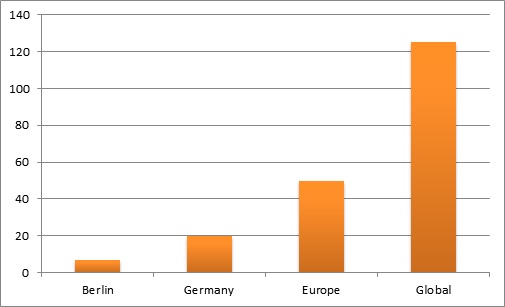
Figure 1: Statistical Analysis of Societies and Associations
Source: Reference7
Target Audience:
Presidents or Vice Presidents/ Directors of Associations and Societies, CEO’s of the companies associated with regenerative medicine and tissue engineering Consumer Products. Retailers, Marketing, Advertising and Promotion Agency Executives, Solution Providers (digital and mobile technology, P-O-P design, retail design, and retail execution), Professors and Students from Academia in the study of Marketing and Advertising filed.
Target Audience:
Industry 40%
Academia 50%
Others 10%
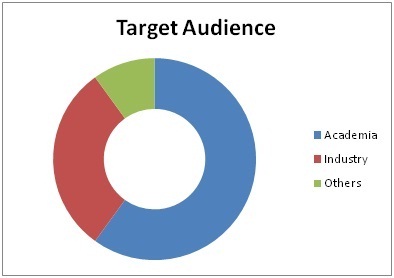
Figure 2: Target Audience
Top Universities in Germany:
Technische University Munchen
University of Würzburg
University Medical Center
University of Tubingen
Universitätsklinikum Münster
Technische Universität Dresden
Leipzig University
University Medicine of Rostock
Institut fur Humangenetik und Anthropologie der Universitat
Otto-von-Guericke University
Hannover Medical School
Max Planck Institute

Figure 3: Top Universities in Germany
Glance at Market of Regenerative Medicine and Tissue Engineering:
There are strong pricing pressures from public healthcare payers globally as Governments try to reduce budget deficits. Regenerative medicine could potentially save public health bodies money by reducing the need for long-term care and reducing associated disorders, with potential benefits for the world economy as a whole.The global market for tissue engineering and regeneration products reached $55.9 billion in 2010, is expected to reach $59.8 billion by 2011, and will further grow to $89.7 billion by 2016 at a compounded annual growth rate (CAGR) of 8.4%. It grows to $135 billion to 2024
The contribution of the European region was 43.3% of the market in 2010, a value of $24.2 billion. The market is expected to reach $25.5 billion by 2011 and will further grow to $36.1 billion by 2016 at a CAGR of 7.2%. It grows to $65 billion to 2024. [Source: Reference2]
Market Growth of Regenerative Medicine and Tissue Engineering:
Statistics which shows growth of Tissue Engineering and Regenerative Medicine

Figure 4: Global Market Growth of Tissue Engineering and Regenerative Medicine
Statistics of Industries Associated with Tissue Engineering and Regenerative Medicine:

Figure 5: Industries associated with Tissue Engineering and Regenerative Medicine
Statistics of Researchers and Academicians working on Tissue Engineering and Regenerative Medicine:
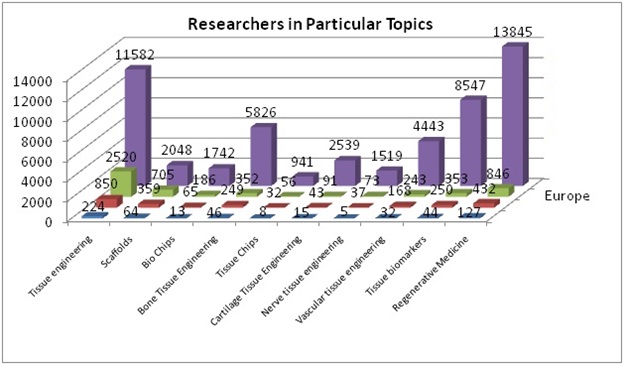
Figure 6: Researchers and Academicians
References:
- http://www.bccresearch.com/
- http://www.marketingcharts.com/traditional/global-ad-spend-expected-to-grow-by-5-2-this-year-39232
- http://www.research-in-germany.org/en/research-funding.html
- http://www.socintel360.com/display-advertising-to-dominate-mobile-social-media-advertising-in-spain-to-account-for-74-of-all-social-media-advertising-spending-in-2014/44/
- https://www.visiongain.com/Report/1159/Translational-Regenerative-Medicine-Market-Prospects-2014-2024/
- http://www.leonhardtventures.com/our-companies.php
- http://www.etrs.org/
Conference Highlights
- Translational Medicine
- Bone Tissue Engineering
- Models of Regeneration
- Regenerative Medicine
- Scaffolds in Regenerative Medicine
- Stem Cells
- Tissue Repair and Regeneration
- Rejuvenation
- Cell Engineering
- Tissue Engineering
- Cell and Organ Regeneration
- Regenerative Medicine Market
- Stem Cell Treatments
- Cellular Therapies
- Gene Therapies
- Immunotherapy
- Biomaterials and Bioengineering
- Stem Cell Transplant
- Ethical and Legal Issues
- Embryonic Stem Cell
- Regenerative Medicine Europe
To share your views and research, please click here to register for the Conference.
To Collaborate Scientific Professionals around the World
| Conference Date | September 12-14, 2016 | ||
| Sponsors & Exhibitors |
|
||
| Speaker Opportunity Closed | Day 1 | Day 2 | Day 3 |
| Poster Opportunity Closed | Click Here to View | ||
Useful Links
Special Issues
All accepted abstracts will be published in respective Our International Journals.
- Journal of Tissue Science & Engineering
- Journal of Biochips & Tissue Chips
- Journal of Cytology & Histology
Abstracts will be provided with Digital Object Identifier by






